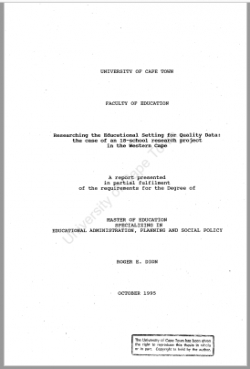Australasian Journal of Early Childhood 40(3):61-67, September Young children dancing mathematical thinking

Type
E-Journal
Authors
Category
ECCE
[ Browse Items ]
Publication Year
2015
Publisher
Early Childhood Australia, Deakin, Australia
URL
[ private ]
Pages
8 p.
Subject
Early childhood education, Preschool education, Learners, Teachers, Educators, Children's mathematical thinking, Concept formation, Dance, Mathematics teaching, Embodied spatial orientation, Spatial visualisation, Australia
Abstract
EARLY CHILDHOOD EDUCATORS ARE required to recognise multiple sources of evidence of children’s mathematical thinking. This paper encourages early childhood educators to consider how young children’s spontaneous dance improvisations provide evidence of their exploration of the mathematical concepts of spatial orientation and spatial visualisation. In this research, examples of four-year-old children’s improvisational dance are drawn from a larger corpus of children’s dance vignettes and analysed, highlighting children’s demonstrations of embodied spatial orientation and spatial visualisation. Recognising children’s spatial thinking provides opportunities for educators to develop contingent learning experiences that facilitate children’s exploration of concepts of lines, angles, direction and two- and three-dimensional shapes through other forms of symbolic expression.
Number of Copies
1
| Library | Accession No | Call No | Copy No | Edition | Location | Availability |
|---|---|---|---|---|---|---|
| 1 | Deakin, Australia | Yes |



